Social media is the term commonly given to Internet and mobile-based channels and tools that allow users to interact with each other and share opinions and content. As the name implies, social media involves the building of communities or networks and encouraging participation and engagement (Chaffey & Smith, 2013: 214). Social networking has become an intrinsic part of life in the digital age, through platforms that help us connect not only to each other, but to brands and their products.
Pintrest
Launched in March 2010 Pintrest is a network that allows users, be them individuals or businesses, to organise content by theme or topic relevant to their own interests (Doherty, 2014). This ‘clustering’ of content is ideal as it allows the platform to become user-generated, with nearly all of the content published being sharable. In accordance to Chaffey and Smith (2013) both of these elements are key features in social media optimization. By creating sharable content the audience is encouraged to display content not only across Pintrest, sharing directly with their followers, but across different social media platforms (Chaffey & Smith, 2013: 275).
In November 2012, Pinterest launched business accounts so that companies could create pages that promote their business online (Doherty, 2014). This allows businesses to have a spread of ‘pins’ from different users that essentially showcase their brand, product or offering. A Pinterest presence creates an accessible, primarily visual, medium through which people can see the many facets of who you are as a brand. What makes Pinterest particularly valuable for business is the ease with which you can promote your work without directly selling. Brands can engage potential customers and build communities, making Pintrest a sustainable social network as it focuses further than a one-off sale. The main disadvantage of Pintrest is the lack of analytical data that can be gathered by the users – far behind the analytics of Twitter or Facebook.
Instagram’s official description is “It’s a fast, beautiful and fun way to share your photos with friends and family.” This is essentially how the social network works (Trotman, 2012). Launched in late 2010, the app didn’t gain traction or become widely popular until 2012, where it was sold to Facebook. An individual or business can post images or videos either directly to one user, or more commonly, publish them to all their followers. The main benefit of Instagram is it is a visual medium. Contrasting Twitter and Facebook, which are heavily text-based and therefore rely on content marketing, Instagram allows users to create profiles based solely on visual aesthetics.
Instagram is a excellent marketing tool when used correctly. In many ways it is a digitalized magazine, catalogue and advert – it provides a highly visual, glamorous platform where followers are drawn to snapshots of aspirational lifestyles. It also allows for affiliate brands and ambassadors to endorse products or organisations and is a great method to create sharable content to consumers (e.g. retail stores using sharing methods to run competitions through loyal consumers). Beyond this, Instagram has an in-built feature which allows users to share their posts across all their social media platforms, including Facebook, Twitter and Tumblr.
Tumblr
Tumblr is a blogging platform that enables users to easily share the content they like, are interested in or is relevant to them. Unlike other blogging platforms, tumblr is focused on sharing multimedia. It is specially formatted to share photos, images, videos, text, quotations, links, and audio all elegantly displayed in a feed (New York University, 2011). Users also have the option of following other’s tumblr blogs, viewing recent posts from followed blogs in a chronological feed.
Like many other social media sites, users can follow, like, and share other blog posts. Tags are the easiest ways to explore tumblr, used similarly as in Twitter with hashtags. Using tags to come up in searches is the best way to get your posts noticed and reacted to. Tumblr has a few benefits of a social network that the previously analysed Pintrest and Instragram do not. Firstly, its users are predominantly creative people. Tumblr is a hub for the creatively inclined, with many artists, illustrators, graphic designers, designers and so on using the network as a platform to display their interests and portfolios (Gantz, 2014). This means businesses that target that specific creative audience are relating to their consumers in a personal level when operating on this platform. An example of this is Denny’s Family Restaurant, who’s personalised custom posts onto tumblr have gone viral by creating them specific for the social network and those exposed to it. This is shown in the below image (advertising their new avocado sauce) which Denny posted using the typical tumblr tongue-in-cheek humour and the dodge text meme.

SMO and creating an Integrated Marketing Campaign
Social Media Optimization is a key activity which needs management as part of a content strategy. Once social media marketing is in place, SMO is a logical step to improve its effectiveness (Chaffey & Smith, 2013: 211).
The focus of SMO is social objects. This is made up of content marketed via social media: images, video, blog posts, comments, status updates, wall posts etc.… anything that creates potential for online conversations. The common feature of Pintrest, Instagram and Tumblr is their form of social objects. All social networks are primarily structured on hosting visual content; images, videos and gifs, more so than text-based content. Therefore by harnessing these social networks effectively, businesses can use them as interactive and highly-visual forms of communicating directly to consumers and potential consumers. Visual content is recognised as being much more engaging as it appeals to consumer’s emotive side, creating more humanized connections and associations (Chaffey & Smith, 2013).

An example of an organisation effectively using all of the analysed networks to create an integrated marketing campaign is delicious. magazine. Delicious. is published monthly, with both a UK and Australian publication. As stated on the publication’s website, “We’ve packed the magazine with inspirational recipes, all illustrated with stunning photography and designed to suit your busy lifestyle. There’s everything you could possibly need to cook up a storm, from sexy assembly suppers to dishes that take time but are well worth the wait. We’re thrilled that the best chefs in Britain have given delicious. their support and are sharing their recipes, ideas and secrets with you in each issue.” (Delicious, 2014).
The most important thing to note from delicious.’s statement is the fact that the magazine is full of stunning photography. It comes as no surprise then that the magazine exists across nearly all visual social networks, the best way to highlight their highly-visual food content.

Pintrest is greatly used by delicious. with their profile hosting a range of pin boards under which they pin their food based on category. By categorizing their recipes and content, delicious.’s posts are highly sharable, easy to find and read.


Similarly, Instagram allows the publication to post images directly to their followers. They can also be easily accessed through hash tags and the explore feature within the app. Food and food photography is an aspect commonly linked to Instagram, therefore making it an ideal platform for delicious. to target fellow ‘foodies’ and gain reach into an already culinary established community.
Tumblr in regard to delicious. magazine is the ultimate of user-generated content. Although delicious. doesn’t have their own profile on the social network platform, their influence on it is widespread. Just searching the hash tag ‘delicious magazine’ brings up thousands of posts created by users which are either stating about one of the magazine’s articles, pictures from the magazine (shared from Pintrest) or (ideal for delicious.) their target audience’s attempts at cooking recipes from the magazine and then posting their results to their consequential followers and the wider ‘food’ community.
Delicious. magazine can therefore be recognised to be present on all three visually stimulating social networks. Their profiles and engagement within these sites follow the key social media optimisation activities that include:
- Creating sharable content – things that their audience is interested in and will share across different social media platforms
- Rewarding engagement – delicious.’s online profile often interacts with followers, repining and replying to comments on posts
- Proactively sharing content – Delicious. shares content from between the Australian and UK publications, sharing it to other platforms
- Encouraging ‘mash up’ – allowing the audience to remix the content to become user-generated, which is ample on Tumblr where users are attempting then publishing recipes.
References
Delicious, 2014, About Us, viewed September 15th 2014, http://www.deliciousmagazine.co.uk/articles/about-us
Doherty, T. 2014, Pintrest, Explained, viewed September 13th 2014, http://www.ibpa-online.org/pinterest-explained/
Gantz, E. 2014, How to Use Tumblr for Business, viewed September 13th 2014, http://www.socialmediaexaminer.com/how-to-use-tumblr-for-business/
New York University, 2011, Tumblr Explained, viewed September 13th 2014, http://www.nyu.edu/content/dam/nyu/studentAffairs/images/Explained/tumblr.pdf
Trotman, R. 2012, What is Instagram?, viewed September 13th 2014, http://lifestylesdefined.com/what-is-instagram-here-let-us-explain/

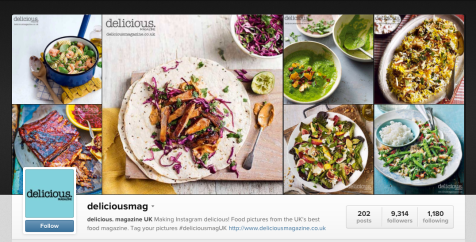
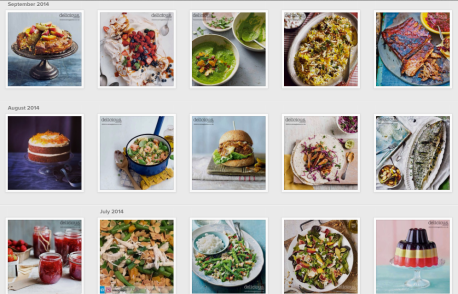
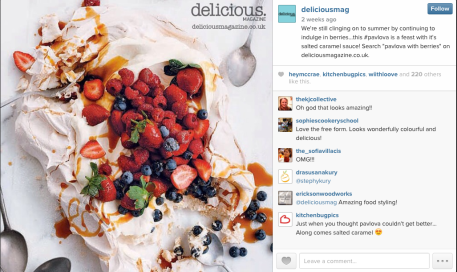
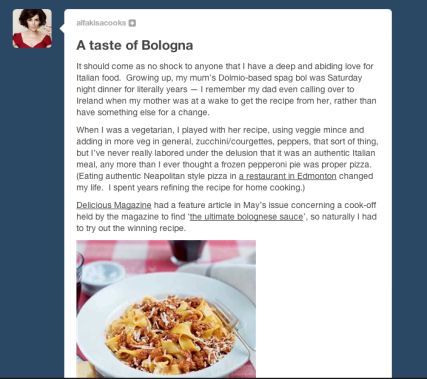

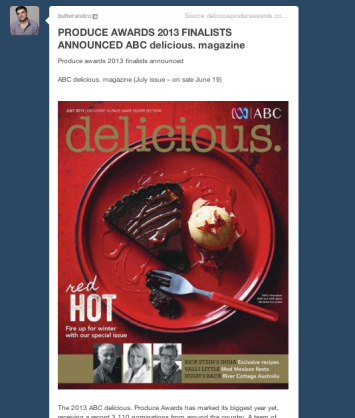
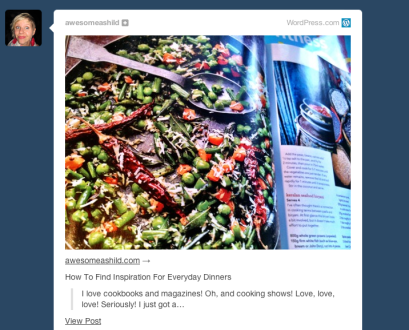
very interesting abbey! great post
LikeLiked by 1 person
Hi Elizabeth, very well presented and very informative. Made me feel hungry. On my site I looked at the pros and cons of the different media. Would be good to get your views. Alex (: http://alexnikos.wordpress.com/)
LikeLiked by 1 person